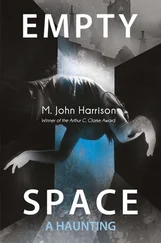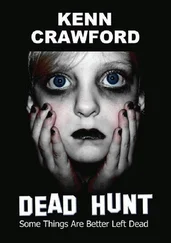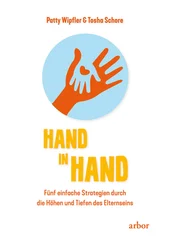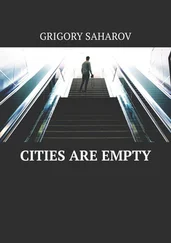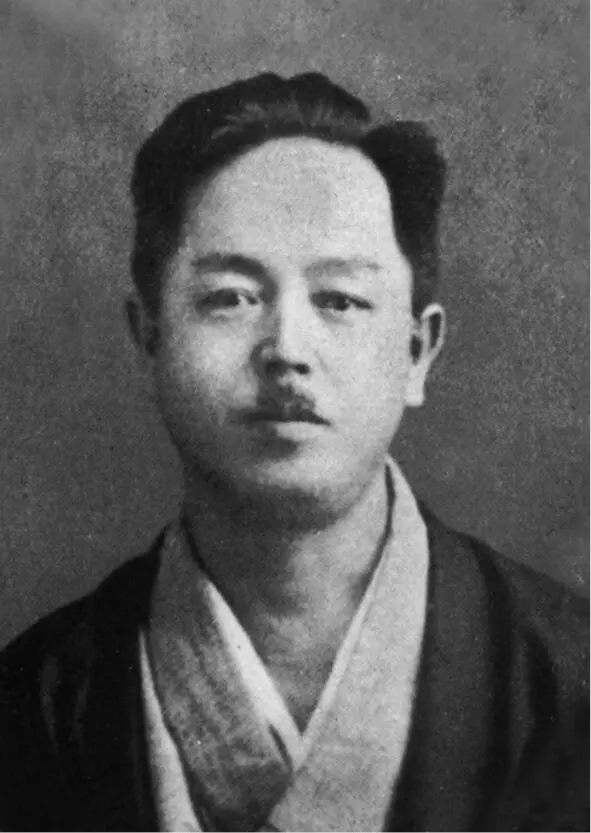 Photo 2: Mabuni Kenwa (1889-1952).
Photo 2: Mabuni Kenwa (1889-1952).
In those days karate was not as popular as today and the rooms for practice (dōjō) were rather simple. Quite often the own garden was used as a dōjō and practice was done in open air. As a child I often watched my father exercising in the garden in the light of a bare bulb hitting the makiwara and hardening his muscles with stone weights.
Master Itosu’s dōjō was not open for everybody. Only very selected persons were taught by him. When my father became 19, Master Itosu allowed him to get lessons from Higaonna Kanryō (1853-1916), who was a famous master of the Naha-te. As a young man Higaonna had traveled to the Chinese province of Fukien and studied there the local kempō. After his return to Okinawa he created the Naha-te based on his studies in China. My father was introduced to Higaonna by Miyagi Chōjun (1888-1953), who later founded the Gōjū ryū. Both became favorite students of Master Higaonna and were called “Dragon and Tiger”, and a lifelong friendship developed between them.
Besides the Shuri and Naha styles, my father also studied the Tomari-te and traditional techniques of the Ryūkyū kobudō. He learned bō techniques from Master Aragaki Seichō (1840-1920), knife techniques from Tawada Shinkatsu (1851-1920) and special bō techniques from Master Soeishi Yoshiyuki.
 Photo 3: Higaonna (Higashionna) Kanryō (1853-1916). He was the most important representative of the Naha-te.
Photo 3: Higaonna (Higashionna) Kanryō (1853-1916). He was the most important representative of the Naha-te.
 Photo 4: Miyagi Chōjun (1888-1953), Higaonna’s disciple and successor, founder of the Gōjū ryū.
Photo 4: Miyagi Chōjun (1888-1953), Higaonna’s disciple and successor, founder of the Gōjū ryū.
Karate is a system of self-defense techniques which have been developed on Okinawa since the 17th century at the beginning of the Tokugawa era and passed on secretly to the following generations. It was used to fight with empty hands against opponents armed with swords and other weapons in times when the lords of Satsuma ruled over the Ryūkyū Islands and did not allow the natives to possess weapons and suppressed any resistance. That is why in Ryūkyū kobudō only agricultural tools were used as weapons.
Furthermore, and unlike to the sword techniques or jūjutsu, which were supported by the Tokugawa government in Edo and by the daimyōs in their fiefs, no written records existed about karate. The masters of karate had to transform the technical experience and ideas they had acquired in many dangerous situations into kata, i.e. certain sequences of movements that were rather different of those practiced in other martial arts. They looked similar to traditional Okinawa “boxing dances” called genkotsu odori. Punches, kicks and blocking techniques are carried out as a sequence of attack and defense movements against an imaginary opponent. This way of practicing might also have been helpful to camouflage the true character of the exercises. So the kata became the legacy of the Okinawan karate. The karate student acquires the techniques and the spirit of karate by exercising kata. In the old days, learning the te always meant practicing kata. The masters arranged the kata according to their own experience and understanding. The Ishimine no Passai, for example, is suitable for fighting against small opponents. So it can be supposed that master Ishimine was not a small person. There are five different variations of the Passai kata named after Itosu, Matsumura, Matsumora, Tomari and Ishimine.
Except for the great masters Itosu and Higaonna, it was quite normal for a karate master to teach only one kata. Many of the kata used in our days in the Itosu style are named after masters or places they came from like the Chatan Yara no Kōsōkun, Tomari no Passai, Matsumura no Passai and Ishimine no Passai. Tomari is the name of a place.35 Matsumura and Ishimine were martial arts teachers. Chatan Yara no Kōsōkun means the Kōsōkun kata, created by master Yara from the village Chatan. This kata, which recently has become rather popular in competitive karate, is the most representative one for the Shuri-te. However, in the form transmitted by Yara it contains a circle block technique (mawashi uke) which is very typical for the Naha-te. It was modified considerably to be used as a competition kata. Anyway, the legitimate kata of Shuri-te are the ones taught by master Itosu.
The Jigen Sword Technique and the Shuri-te
According to certain recent research, the tao of Chinese kempō are said to be the archetype of karate kata. But although certain similarities may be found in the tao, karate is – technically and spiritually – totally different from Chinese kempō. This will be explained on the following pages.
As mentioned above, all Okinawan hand-fighting techniques are based on the two main styles Shuri-te and Naha-te. The Shuri-te was taught as secret knowledge among the Shuri nobility. It was perfected by Matsumura Sōkon (1800-1896), the incomparable master of the fist. His teacher was Sakugawa Shungo (1733-1815), who was known in Shuri as an outstanding martial arts expert. He had studied the Chinese kempō (tō-de) in China and passed his knowledge on to the Shuri nobility. That is how he earned the name Tōde Sakugawa. He had learned the northern Peking style which some people think to be the archetype of the Shuri-te. At the age of 20 Matsumura was sent by the Ryūkyū court to the Satsuma province in southern Kyūshū. There he learned the Jigen sword technique and reached the highest level of perfection called unyō (flame cloud). At the age of 27 he returned to the Ryūkyū islands and soon had the opportunity to travel on board of a tribute ship to China. So he could study Chinese kempō in Peking.
In the Jigen ryū there are no upper, middle and lower positions of the sword but only one position called hassō. The sword is raised as if to thrust into the sky. Then, with a bloodcurdling kiai36, one makes a step forward or lowers the stance, crashing the tachi sword down.
The philosophy of the Jigen sword technique demands full control of the oncoming situation and the readiness to win with the first strike. Kondō Isamu, member of the Shinsen gumi37, remembered that there was nothing they were more afraid of than this first strike by the Satsuma men using the Jigen sword technique and that they were repeatedly instructed to evade it. During the war to overthrow the Tokugawa government in 1868 as well as during the samurai rebellion against the new Meiji government in 1877, the Satsuma samurai were feared because of their first strike technique that intimidated their enemies whose corpses were often found cut open by a “sash strike” from the shoulder to the navel. Some even had the guard of their own sword stuck between the eyebrows. They had tried to stop the Satsuma sword by raising their own sword above their heads. But they had underestimated the speed of attack by far so that the defending sword was smashed into the defender’s skull.
The Jigen sword technique was aiming at the highest speed of impact. The highest level of perfection was called flame cloud. This is described in the Manual of Jigen Style Military Techniques as follows: “One eighth of a minute is a byō. A tenth of a byō is called shi. A tenth of a shi is a kotsu. A tenth of a kotsu is a kō. A tenth of a kō is called rin. When one has reached rin this level is called ‘Cloud of Flames’ (unyō).”
Читать дальше

 Photo 2: Mabuni Kenwa (1889-1952).
Photo 2: Mabuni Kenwa (1889-1952). Photo 3: Higaonna (Higashionna) Kanryō (1853-1916). He was the most important representative of the Naha-te.
Photo 3: Higaonna (Higashionna) Kanryō (1853-1916). He was the most important representative of the Naha-te. Photo 4: Miyagi Chōjun (1888-1953), Higaonna’s disciple and successor, founder of the Gōjū ryū.
Photo 4: Miyagi Chōjun (1888-1953), Higaonna’s disciple and successor, founder of the Gōjū ryū.
